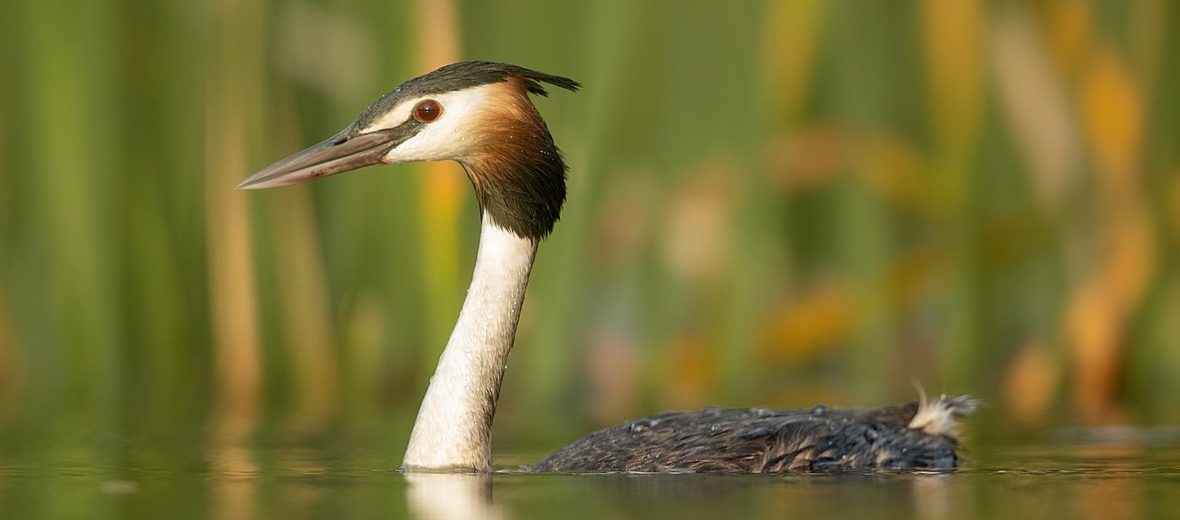
The great crested grebe, aka pūteketeke or Australasian crested grebe, can be found in Europe, Asia, Africa, and Australia. These birds prefer well planted habitats near artificial water bodies, bays, estuaries, freshwater lakes, lagoons, small pools, slow-flowing rivers, and swamps. During the winter months, these birds migrate to warmer habitats that provide reservoirs, freshwater lakes, and sheltered coastal inshore water areas like tidal lagoons and brackish estuaries. Even though they face the threat of invasive species (and with them disease, predation, and competition for food), these birds are widespread and abundant, and therefor listed as Least Concern by the IUCN. They number an estimated 997,000 wild individuals. This article is on special request from my friend, Heather.
First the Stats…
Scientific name: Podiceps cristatus
Weight: Up to 3.3 lbs.
Length: Up to 20 inches
Wingspan: Up to 29 inches
Lifespan: Up to 15 years
Now on to the Facts!
1.) First off, for a limited time, you can vote for this bird as New Zealand’s bird of the century by visiting this site.
2.) These grebes are the largest members of the Old World grebe family.
3.) Great crested grebes are diurnal (active during the day).
4.) They hunt by dipping their head underwater, diving, and even swimming after their prey.
5.) Even though they are usually solitary, during the migration season they can sometimes gather into large flocks of up to 5,000+ individuals.
But wait, there’s more on the great crested grebe!
6.) Pūteketekes communicate vocally via various calls, such as a clicking “kek” sound, a “rah-rah-rah” call, and also a low growling “gorr” sound.
7.) Primarily preying on fish, these birds will also hunt insects, small crustaceans, and amphibians.
Did you know…?
These birds are known for eating their feathers. It is presumed that they do so to rid their intestinal tracts of parasites. The feathers form pellets that scrape the intestinal wall and remove gastrointestinal parasites.
8.) They are serially monogamous (stay with 1 partner throughout each breeding season, but leave after the young have fledged).
9.) Their mating displays are extravagant, and consist of raising and shaking their head plumes, swimming near 1 another with aquatic grasses in their bill, then they will rise up breast to breast in the water and turn their heads from 1 side to the other.
10.) Females lay up to 2 eggs that hatch in up to 31 days.
But wait, there’s still more on the great crested grebe!
11.) Chicks fledge in up to 16 weeks.
12.) Pūteketeke chicks often ride on the backs of their parents.
Now a Short Great Crested Grebe Video!
This video is about grebes in general.
Be sure to share & comment below! Also, check out the Critter Science YouTube channel. Videos added regularly!
Want to suggest a critter for me to write about? Let me know here.
Some source material acquired from: Wikipedia & IUCN
Photo credit: JJ Harrison



